MAORI

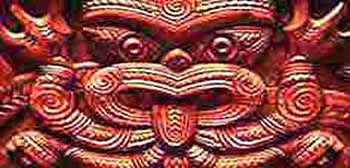

Maori are the 'host people' of New Zealand. Although described by many as 'Maori' in fact Maori are a composition of many Iwi (Tribes) Hapu (Subtribes) and Whanau units.
Their name is derived from Ma-Uri, which means Children of Heaven.
Originally they were hunters, but soon became peasants, living of agriculture.
Today the approximately 500,000 Maori are mainly living in the cities, but they remain closely connected to their tribes.
Their tribal groupings are derived from the people of each canoe, settling New Zealand in the early times.
Polynesian navigator Kupe has been credited with the discovery of New Zealand in 950 AD. He named it Aotearoa - Land of the Long White Cloud.
Maori arrivals into Aotearoa developed into tribes and as tribes grew, into sub-tribes. This tribal system is still in use today and is a strong feature in Maori land issues and treaty rights claims.

Maori culture subsequently developed with little or no interference from outside influences. Being warriors, they engaged in inter-tribal battles, mostly over territory, with the losers often becoming slaves or food - cannibalization of the body was a way of securing an enemy's power or mana.
The Maori were predominately not cannibals. There was only one tribe that were. They live in the Queen Charlotte Sounds area, in the South Island. Other tribes did, however, keep the heads of their defeated enemy, to secure their mana.
Over time, the Maori evolved a culture sustained by agriculture and hunting. They had a complex social structure of tribes, sub-tribes and clans, and a stratified society made up of nobility, priestly and slave classes. Genealogy (Whakapapa) was paramount as it delineated origins and status. Land was held communally, with each tribe and sub-tribe having a marae (meeting place where the tribe's ancestral spirits resided) and often living in a fortified village or pa.
Maori history was not recorded using the written word; instead, it was kept in long, very specific and highly stylised songs and chants. Protocol was elaborate and involved: among other forms of etiquette, are the fierce, eruptive greetings known as the haka (war chant) and wero (challenge) which are still used today.
Centuries later, around 1350 AD, a great migration of people from Kupe's homeland of Hawaiki followed his navigational instructions and sailed to New Zealand, eventually supplanting or mixing with previous residents. Their culture, developed over centuries without any discernible outside influence, was hierarchical and often sanguinary.
In 1642, the Dutch explorer Abel Tasman briefly sailed along the west coast of New Zealand; any thoughts of a longer stay were thwarted when his attempt to land resulted in several of his crew being killed and eaten.
The first European explorers arrived in Aotearoa in search of a large continent thought to exist somewhere in the South Pacific Ocean. First to arrive was Able Tasman in the mid 1600's but in general most people refer to the European discovery of Aotearoa as been accredited to Capt. James Cook.
In 1769, Captain James Cook circumnavigated the two main islands aboard the Endeavour. Initial contact with the Maoris proved violent but Cook, impressed with the Maoris' bravery and spirit and recognising the potential of this newfound land, grabbed it for the British crown before setting sail for Australia.
From this came the flow of foreigners to Aotearoa that was to never stop. Initial contacts were filled with misunderstandings and some skirmishes broke out between the Maori and the new arrivals (Maori were at this time, still engaged in inter-tribal feuds).
At first the maori did not welcome the Europeans - but in time social interaction was bound to develop - though the Europeans had come to their land in search of treasure - gold, fur seals and free land.
When the British began their antipodean colonising, New Zealand was originally seen as an offshoot of Australian enterprise in whaling and sealing: in fact, from 1839 to 1841 the country was under the jurisdiction of New South Wales.
However, increased European settlement soon proved problematic: a policy was urgently required regarding land deals between the settlers (Pakeha) and the Maori.
In 1840, the Treaty of Waitangi was signed, with the Maori ceding sovereignty of their country to Britain in exchange for protection and guaranteed possession of their lands.
But relations between the Maori and Pakeha soon soured (the Maoris became increasingly alarmed at the effect the Pakeha had on their society while the Pakeha rode roughshod over Maori rights outlined in the treaty). In 1860, war broke out between them, continuing for much of the decade before the Maori were defeated.
By the late 19th century, things had temporarily calmed down. The discovery of gold had engendered much prosperity, and wide-scale sheep farming meant New Zealand became an efficient and mostly self-reliant country. Sweeping social changes - women's suffrage, social security, the encouragement of trade unions and the introduction of child care services - cemented New Zealand's reputation as a country committed to egalitarian reform.
New Zealand was given dominion status in the British Empire in 1907 and granted autonomy by Britain in 1931; independence, however, was not formally proclaimed until 1947. The economy continued to prosper until the worldwide recession in the 1980s, when unemployment rose dramatically.
Today the economy has stabilised, thanks largely to an export-driven recovery. Internationally, New Zealand was hailed during the mid-1980s for its anti-nuclear stance - even though it meant a falling-out with the USA - and its opposition to French nuclear testing in the Pacific (which France countered, to much opprobrium but little penalty, by blowing up the Greenpeace vessel Rainbow Warrior as it sat in Auckland Harbour).
The Maori population is now increasing faster than the Pakeha and a resurgence in Maoritanga (Maori culture) has had a major and lasting impact on New Zealand society. Culturally, the most heartening aspect had been the mending of relations between the Maori and Pakeha (in 1985, the Treaty of Waitangi was overhauled, leading to financial reparations to a number of Maori tribes whose land had been unjustly confiscated).
However, a recent (2000) clumsy take-it-or-leave-it attempt by the New Zealand government to offer financial reparations has resulted in an upsurge of militant Maori protests. Maoris have disrupted events, occupied land claim areas, set up roadblocks, introduced a sledgehammer to the America's Cup and threatened to blow-up the New Zealand parliament. The disharmony has shocked New Zealanders and placed national conciliation at the top of the political agenda.
Much of the activity and control of the Maori world is carried out on the whanau and hapu level. Local hapu had control of the daily goings on or an area as well as the assets of these respective hapu.
The issue of Ta Moko (Maori styled tattoo) was controlled at the whanau and hapu levels.

Intricate tattooing was frequently sported, with men of estimable rank being heavily tattooed from face to feet (women wore only a facial tattoo on the chin (moko). Clothing, ornaments and clubs were fashioned from feathers, the fur of dogs, bone and jade.
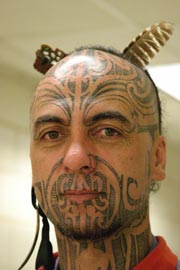
Maori Chief on Facial Tattoos and Tribal Pride
National Geographic - October 2003
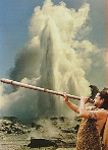
Nowadays the music is mainly vocal. The use of instruments became neglected under influence of christianity, but today there is a strong revival movement. Originally Maori people only used aerophones and idiophones. Of course recently in contemporary commercial music the guitar and ukelele made their appearance too.
The vocal music can be divided in two categories: the recitatives and the songs. The recitatives have no fixed pitch organization and the tempo is much higher than the song's tempo.
Maori music, like all etnic music, has changed rapidly in time under the influence of western culture. Western etnomusicologists have a mainly negative attitude towards these changes. And many times we can agree, because the traditional culture dissapeares under commercialisation along western standards. But in the case of the Maori we would prefer to be more nuanced, because we see next to the commercialisation a strong revival of the traditional Maori music too.
Powhiri :
This welcome ceremony is a mixed form. Men shout fiercly, whilst women sing in a melodic way. The Powhiri which was specially executed for us in Christchurch during our New Zealand concert tour started with the men standing in front of the women. They made clear they were ready for a battle by shouting, menacing with their weapons and grimacing. After a while the women came to the front, singing and carrying green leaves they moved gently. The men kneeled down on one knee and put their weapons on the floor.
Most of the times a powhiri ends with a haka (men song) without weapons.
Haka:
are shouted speeches by men, combined with a fierce dance. Haka Taparahi are performed without weapons and they can give expression to different emotions depending on the situation for which they are performed. Haka Peruperu are performed with weapons and associated with war dances.
Ngeri :
This are recitatives used to annihilate any form of tapu.
Karakia:
They are quick incantations and spells.They are used during daily life by both adults and children, but also during rituals. The ritual karakia is difficult and dangerous to execute, because a mistake during the performance will attract bad luck, illness and even the death of the reciter. For very important karakia two priest reciters are needed in order to alternate the breathing pauze, because even the slightest moment of silence could result into disaster.
Paatere:
are mainly performed in group and composed by women in answer to gossip. The texts of paatere consist merely out of summing up of the kinship connections of the author.
Kaioraora:
are like paatere answers to gossip but with a rude, offensive text.
There are songs and sung poetry called 'Nga Moteatea'.
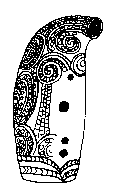
Nguru
This small instrument (8 to 10 cm) is curved at one end, because originally this flute was made out of a whale tooth. It can also be made out of wood, stone, clay. It has one open end like the koauau and one small opening at the curved end. It has 2 to 4 fingerholes.
Maori language is still an endangered language as English is taught in schools to be the primary language (compulsory subject). Maori today are pushing to have the Maori language also taught as a compulsory subject thus ensuring its survival and intergration into New Zealand society.
In most Maori communities, men hunted and plowed, while women weeded, wove, and cooked. Group activities included food gathering, food cultivation, and warfare. Art was and is a major part of Maori community; poetry, oratory, tattooing, and the carving of wood, bone, and stone. Communal buildings were elaborately decorated with wood carvings. Many Maori wore highly decorative personal ornaments such as amulets and carved stone pendants (Pounamu).
The Maori belief systems are encompassed and filtered through a social structuring of Tapu. Similar to the Polynesians kapu system. Tapu, Mana, Mauri, Mauri-ora, Aroha, Utu and Makutu are all entwined into the social fabric.
Their villages are fortified with in the centre the marae, an open space on which the whare hui, or the meeting house is located. This building is the symbolic body of the ancestor.
Around the fort sites a palisade with watch tower is built. In these watch towers 'pahu', huge wooden plates, functioning as 'alarm gongs', were suspended.
The Maori believed in deities and personifications, including Tane-mahuta, lord of the forest, Tawhirimatea, Rongo-ma-tane, Uenuku and Tangaroa, a Polynesian ocean god.
Tribal high priests and the chief, also believed in and understood the existance of the supreme God, Io, whose existence was not generally revealed to the community.
All Maori believed in 'atua', or spirits.
The Maori religion is closely related to nature and to the ancestors. Nature itself is considered a living being and thus the interaction between man and nature is bound by prescripts and rituals. The notion tapu (sacred), from which the word tabu is deduced, is still a central notion in contemporary Maori society.
Tiki are antropomorphic ornaments representing spiritual beings. Many times they have some kind of deformation, like only 3 fingers and they can be both positive and negative towards mankind.
Despite the western influences a good part of the Maori religion remained intact. Many rituals are still carried out and are often associated with traditional visual arts and traditional music.
The Maori belief systems are encompassed and filtered through a social structuring of Tapu. Similar to the Polynesians kapu system. Tapu, Mana, Mauri, Mauri-ora, Aroha, Utu and Makutu are all entwined into the social fabric.
In the Chatam Islands 200 miles east of the NZ mainland at Whangaroa (Port Hutt). E.J. Prenderville tells of a haunted cottage. It was used by fishermen working for the trawler South Seas. Legend has it that many years ago, the then occupier of the cottage, after drinking a considerable amount of squareface gin, bent forward to get an ember for his pipe and his breath caught fire. From that time, the tormented spirit has caused many a short stay at that cottage.
Dunedin Hospital's Grey Lady 1940's:
Many stories have been told of the Grey Lady of the old Dunedin Hospital. It's thought she was a young mother, whose baby was taken into care. After she had given birth the young woman sank into a deep depression and subsequently died. Her pitiful ghost wandered between Ward one and Victoria ward going by the stairs to Jubilee ward. She was thought to be looking for her baby. Many nurses reported seeing the shadowy ghostly apparition late in the evenings.
Wellington Opera House:
Wellington Opera House was built early this century and so the story goes that it too has it's own ghost. One with a few troubled memories. Albert Liddy the theatres architect was so unhappy that he commited suicide in his design office at the back of the theatre. It is said that accidents befall anyone who dares to criticise his theatre. A former manager claims there were three such accidents during his time as manager. All in the same place. The troubled apparition has been still for some time now, perhaps he has found peace, or perhaps no one dares to criticise his theatre.
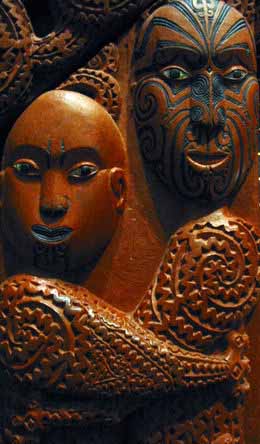
Creation Myth
Macki Ruka is an international speaker and healer, chosen at age three to be initiated into the highest teachings of the celestial and earthly realms. He was chosen by the United Nations as one of seven elders to take ancient prophecies to the world. Macki has traveled around the world five times in his journey, meeting with the Pope, the Dali Lama, Mother Theresa, and other world spiritual leaders.
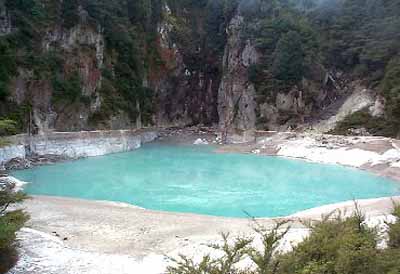
New Zealand
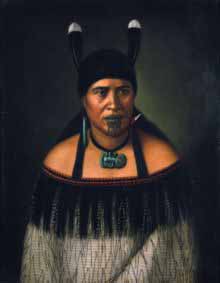
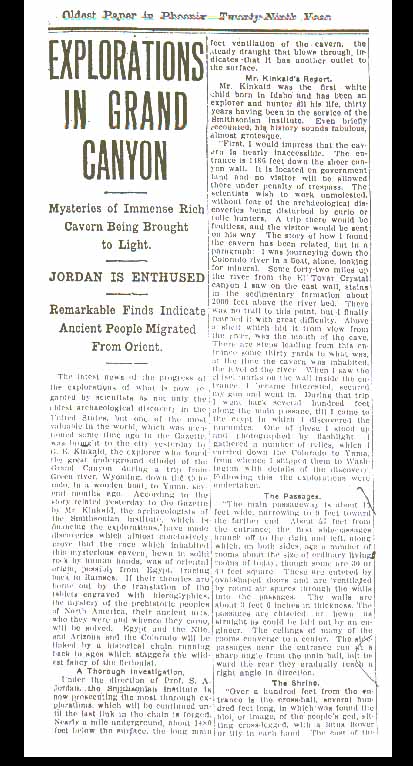
Replies